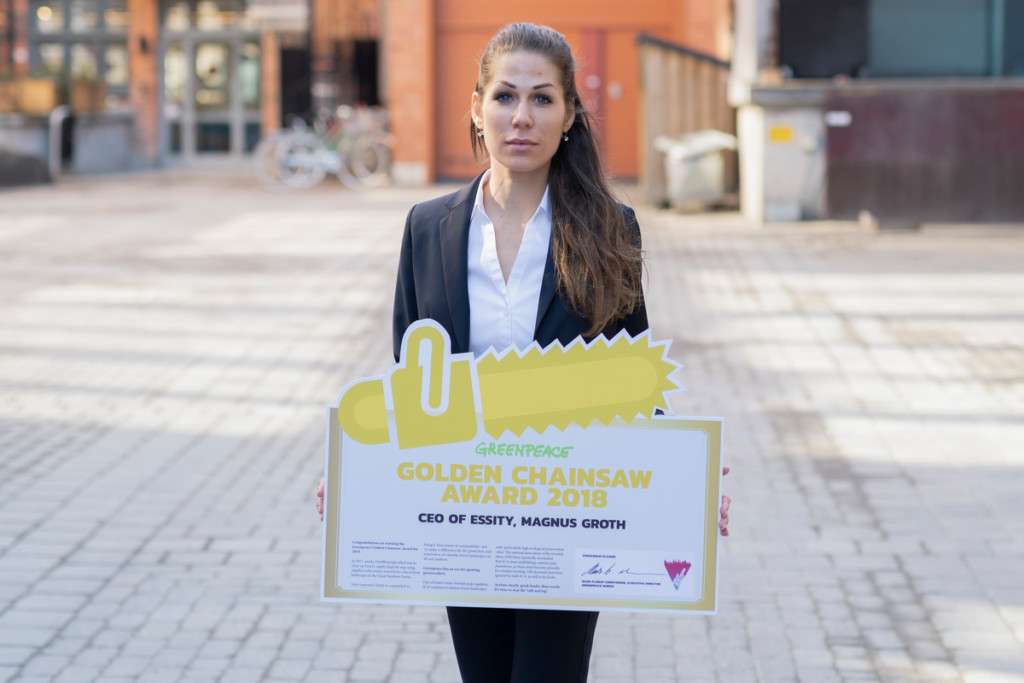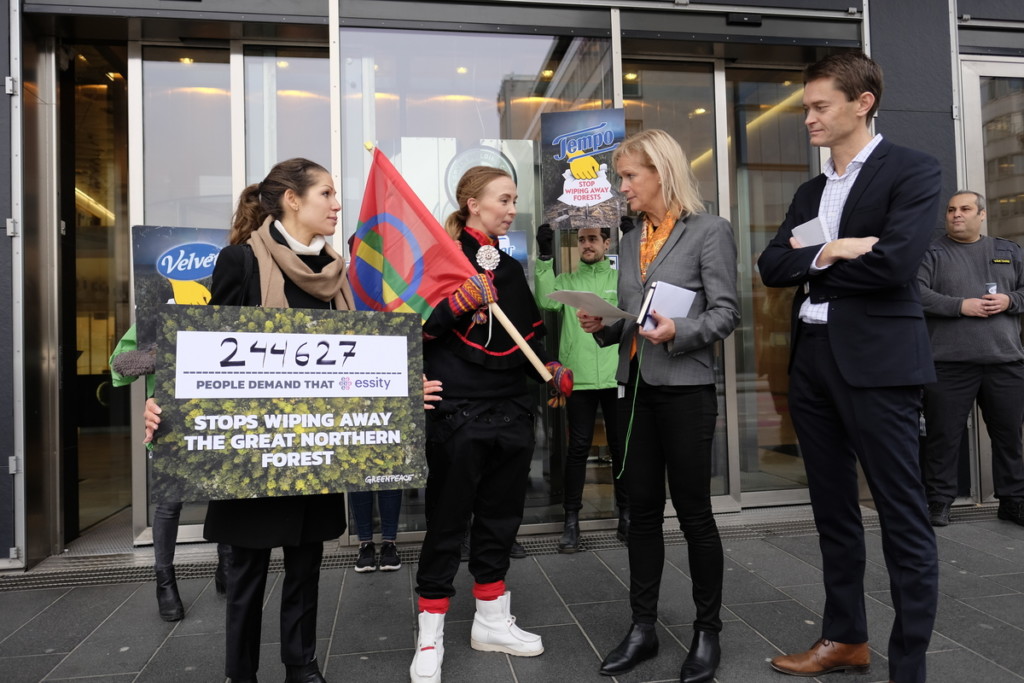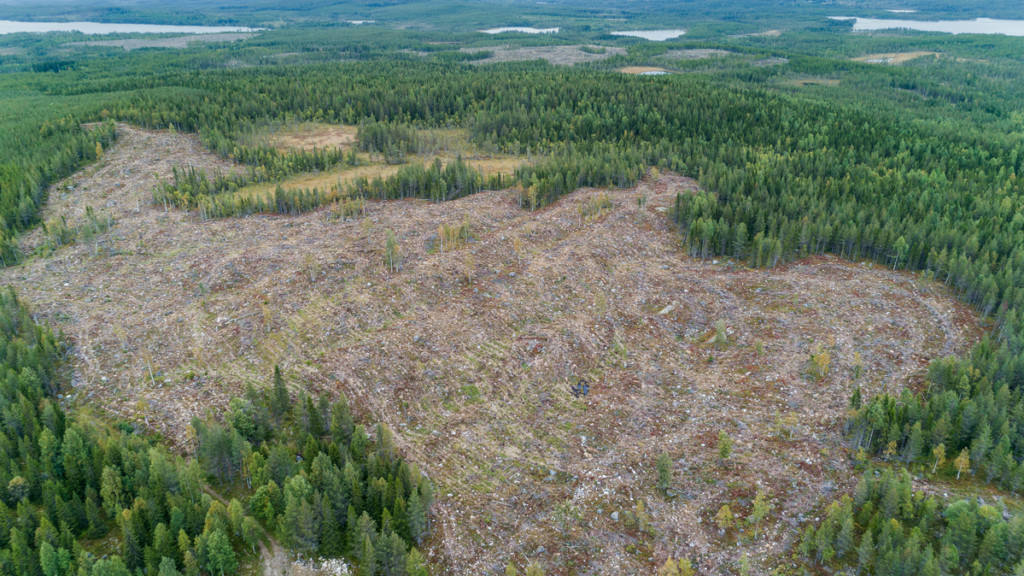“And the Greenpeace ‘Golden Chainsaw Award’ goes to… [dramatic pause for effect]… Magnus Groth, the CEO of Essity!”

Before presenting the Golden Chainsaw Award 2018 © Christian Åslund / Greenpeace
You probably don’t know who Magnus Groth or Essity are. But when whenever you use the bathroom, you might just end up using one of the many brands of toilet paper made by Europe’s largest tissue producing giant, Essity. They’re the company behind Tempo, Velvet, Plenty, Edet, Lotus, Zewa and Tork.
Yesterday, Greenpeace Nordic payed a visit to Essity’s annual meeting of its shareholders in downtown Stockholm. Our campaigners presented Mr. Groth with the Greenpeace ‘Golden Chainsaw Award’, an accolade granted to those in influential positions that fail to act to protect the world’s forests.
Previous winners of this award have included the ‘Soya King‘ of the Amazon, Asia Pulp and Paper (APP) and the government of Papua New Guinea, to name but a few. Some have gone on to change their ways after receiving the award.
Why did Essity’s CEO receive the Award this year?
In October 2017, Greenpeace and Sofia Jannok, a twice-Grammy-nominated Sámi artist from Sweden, tried to deliver the signatures of almost a quarter of a million people directly to Mr. Groth at Essity’s headquarters in Stockholm. He was too preoccupied with announcing the company’s Q3 financial results and sent public relations staff to accept the petition.

Sofia Jannok and representatives from Greenpeace Nordic deliver the signatures of almost a quarter of a million people to Essity in Stockholm © Greenpeace
It wasn’t until late November that we received a written response to the petition from Mr. Groth. He said that Essity was committed to being a ‘forerunner of sustainability’ and ‘to make a difference for the protection and restoration of valuable forest landscapes on all our markets.’
So, what has Essity really been doing to protect the Great Northern Forest?
Well, they’ve been holding a lot of meetings, including with Greenpeace. In January, it finally got around to writing to its pulp suppliers, asking for more information about where the fibre comes from and what the environmental and social impacts might be.
In late February, Essity were due to update Greenpeace on the response. But they’ve just asked for more time. We’re now scheduled to meet them in early May.

Lodgepole Pine Plantations and clear cuts in Sweden © Christian Åslund / Greenpeace
There is still no sign of SCA, one of Essity’s main Swedish pulp suppliers, agreeing to stop the destruction of some of the world’s most precious old-growth forests, crucial to the livelihoods of the Sámi people.
The national association of the Swedish Sámi (SSR) – whose members include most Sámi reindeer herders – have repeatedly demanded that SCA stops cutting down any forests to develop plantations of lodgepole pine – an invasive tree species native to North America. Once established, these plantation areas become unsuitable for traditional reindeer herding.

Reindeer in the Great Northern Forest © Maria Boström / SSR
To date, Sámi reindeer herders’ demands have been ignored by both SCA and Essity. But Greenpeace is working closely with SSR to help them get a ban on the use of lodgepole pine.
Clearly, actions speak louder than words. It’s time for Essity to stop with all the talking and actually do something to protect this forest wilderness.
Lina Burnelius is a forest campaigner for Greenpeace Nordic



